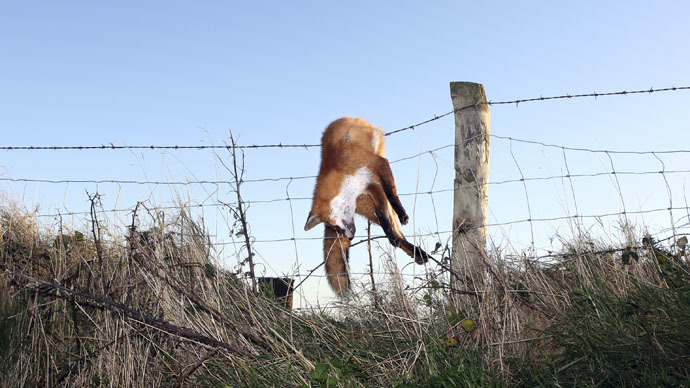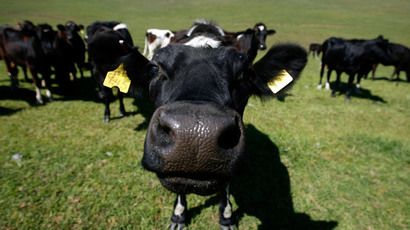US govt agency slaughtered 2.7 million animals last year, incl. household pets

The US Department of Agriculture’s Wildlife Service killed 2.7 million animals last year, thanks to its controversial culling program. Many of them weren’t killed intentionally, but were caught via indiscriminate methods meant for other animals.
The USDA released its so-called 'kill list', a report officially called 'Animals Taken by Wildlife Services ‒ FY 2014'. The dead animals listed came from 319 species of birds and cats, bears and bats, monkeys and muskrats, and many other types of animals.
Included were eight eagles (three bald and five golden), which are protected under federal law.
The kill list also counted 730 cats that were listed as “feral/free ranging” and more than 270 dogs that are “feral, free-ranging and hybrids.”
However, there is no way of knowing if those cats and dogs were really feral or free-ranging, or if they were household pets.
Rex Shaddox, a former Wildlife Services agent in Wyoming, told the Los Angeles Times in 2014 that agents "were told to doctor our reports ‒ we were not allowed to show we killed household pets."
He added that he knew of a rancher who kept a 10-foot chain of interconnected dog collars that were a souvenir of the agency’s collateral damage.
The 1.1 million European starlings killed by Wildlife Services represent 43 percent of all animals killed by the USDA division last year. It’s considered an invasive species and the government kills them to prevent masses of starlings from descending on fields and orchards, where they destroy crops and spread disease.
The Wildlife Service aims to kill predatory or invasive animals to protect plants and other animals ‒ which can lead to “glaring” contradictions like killing those 730 cats to protect rats, but then destroying 1,327 black rats, 353 Norway rats, 74 Hutia rats, seven Polynesian rats, four bushy-tailed woodrats, and three kangaroo rats, according to the website Mother Jones.
Many activists and scientists say that the government’s attempts to control those unwanted animals is excessive, and can negatively impact fragile ecosystems.
“A growing body of science has found the agency's war against predators, waged to protect livestock and big game, is altering ecosystems in ways that diminish biodiversity, degrade habitat and invite disease,” a 2012 Sacramento Bee investigation into the agency’s practices found.
And the agency’s methods are often less than humane. It exterminates nuisance wildlife by poisoning, gassing, trapping and aerial gunning (or shooting predators from planes and helicopters), the Los Angeles Times reported. It uses leghold traps and neck snares ‒ methods that conservation groups say are excessively brutal.
“Based on my 15 years of experience releasing nearly 40 moose from snares and discussions with other Alaskan biologists, I concluded that most moose restrained in wolf snares die either at the capture site or from frozen limbs or nose subsequent to release," Alaska biologist Craig Gardner reported in the journal Alces.
The Obama admin accidentally killed 113 porcupines last year. Obama's other kill list: http://t.co/hyBZG7ggZvpic.twitter.com/GFvCdCTnr7
— Tim McDonnell (@timmcdonnell) April 20, 2015
On top of its kill methods, the Wildlife Service prefers to work in the shadows to avoid controversy.
"We pride ourselves on our ability to go in and get the job done quietly without many people knowing about it," Dennis Orthmeyer, acting state director of Wildlife Services in California, told the Sacramento Bee during its investigation.
Avoiding controversy can lead to cover-ups.
Gary Strader, a former USDA employee, told the Sacramento Bee he once discovered a federally protected golden eagle dead in a trap.
"I called my supervisor and said, 'I just caught a golden eagle and it's dead,'" said Strader. "He said, 'Did anybody see it?' I said, 'Geez, I don't think so.'
"He said, 'If you think nobody saw it, go get a shovel and
bury it and don't say nothing to anybody.'
"That bothered me," said Strader, whose job was terminated in 2009. "It wasn't right."
The silver lining of the kill list is that it is the lowest tally since President Barack Obama took office in 2009, Mother Jones reported. Last year’s total of 2.7 million animals is a 40 percent drop from 2013’s 4.3 million killed.














